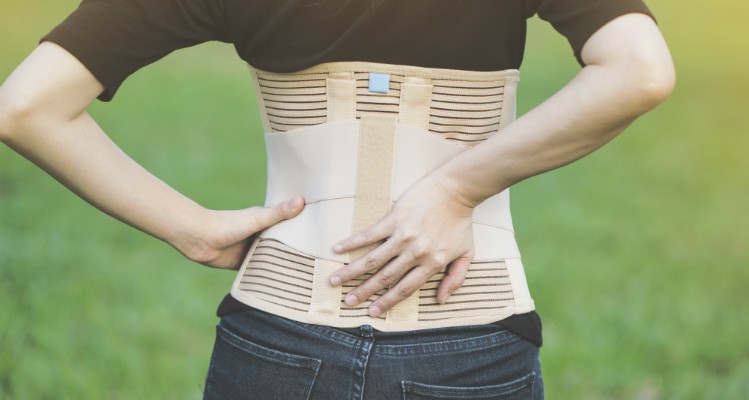Table of Contents
What are back braces?
A back brace is a tool or device that provides support, stability, compression, and relieves back pain of the wearer. However, some people believe that wearing back pain braces may also help reduce the chances of back injuries, prevent back pain, and promote recovery following back surgery.
Back braces are designed with different types of stuff and materials. For example, you can find back braces designed in cotton, elastic compression bands, rigid metals or plastic, neoprene, or a combination of these materials.
How do back braces work?
Almost all the back braces help unload the pressure or weight from your back and transfer it to the abdomen. It helps reduce the extra stress and weight from the spinal structure. The decreased pressure on the spine helps reduce back-muscle tensions. It is a protective reaction to the trauma and other back injuries, helping alleviate pain and other discomforts.
Back braces are also considered the best tools for proprioceptive input, encouraging people to use proper body mechanics and correct their posture. A study has shown that wearing good quality back braces for at least 03 weeks may help improve your proprioception. However, it is advisable to wear the back braces correctly suggested by your GP.
Conditions require wearing back braces
Back braces are designed to help manage several back problems. However, the following are the common problems you can manage by wearing the best back pain support:
- Muscle tension & strain
Back muscle strain happens when a back muscle is twisted or pulled. As well as this, overstressing the back muscles and improper lifting can also cause muscle tension or stress. A back brace may help alleviate muscle tension or back pain by reducing pressure on the spine. However, muscles need reduced strength to support the spinal column. In addition, heat provided by the back sprains and strains braces can help relax tense muscles, helping relieve pain. Remember that the back braces for back muscles weakness and injury are not recommended for wearing longer than 04 days.
- Spinal stenosis
Spinal stenosis is a condition that leads to the narrowing of the spinal canal in the lower back. The condition can exert pressure on the spinal cord or the nerves – runs through the spinal cord to the muscles. Stenosis can occur in any part of the spine. However, most cases have been seen in the lower back.
Wearing back braces for spinal stenosis helps reduce pressure and limit the micro-motions in the lower back. Remember that extra pressure on the lower spine and unnecessary motion of the lower back may irritate the nerve root. In some cases, bracing helps adjust posture or shift excess weight to the abdomen, helping unload pressure from the spine.
- Lumbar herniated disc
A herniated disc is a condition that can be occurred anywhere along the spine; however, most often, the condition occurs in the lower spine. Several conditions can cause a herniated disc. For example, extra pressure, repetitive movements, and overuse can cause a herniated disc. As well as this, age, weight, occupation, and genetics are the risk factors contributing to the risk of the herniated disc. Wearing the braces for back herniated can help stabilise the spine. As well as this, it also helps reduce micro-motion at the affected segments of the spine.
- Vertebral compression fracture
Vertebral compression fracture results from osteoporosis – a type of bone loss that makes the bones susceptible to breaking easily. Other causes of a vertebral compression fracture may include spinal injuries and tumours in the spine. The tumours may start developing in the vertebrae. As well as this, high-contact sports, direct falls, and accidental situations may also cause a vertebral compression fracture. Wearing back braces helps reduce the chances of fracture. Both semi-rigid and rigid back braces help manage this condition. These back braces help reduce micro-motion at the fracture or other affected places. These also help reduce the pressure on the spinal.
- Spondylosis
Wear and tear on the spine components may result in spondylosis. People above 60 years usually show the signs of spondylosis on X-rays. Experts suggest wearing the back braces to help manage the symptoms of spondylosis. You can wear both types, i.e., semi-rigid or rigid back braces. Usually, wearing back braces helps reduce the unnecessary movements at the fractured vertebral level, reducing pressure and allowing the fracture to heal.
Osteoarthritis
Deterioration of these cartilages decreases cushioning between bones, resulting in osteoarthritis. Cartilage is a firm and slippery tissue that plays a vital role in frictionless joint motion. Wearing back braces for osteoarthritis helps reduce instability and unnecessary movements of bones or the spine, helping lessen pain and other symptoms. As well as this, the back brace helps reduce pressure on the affected joints, helping alleviate pain and make your everyday movement easier.
- For posture corrector
Bad posture may result from a number of factors. For example, an injury, illness, and genetic issues are the common causes contributing to the bad posture. As well as this, your daily routine or occupational activities may also result in poor back posture. For example, sitting for long periods and other activities. Experts suggest wearing back supports as they help relieve pain and other discomforts by improving your poor back posture. Wearing back posture correctors helps gently pull your muscles back to better align them, reducing pressure on stretched back muscles. Wearing a back brace at night helps improve posture when sleeping.
- Post-operative healing
Your healthcare professionals or GP may also suggest wearing back braces following back surgery. Wearing back braces after surgery helps keep your back or spine immobilised and restricts all unnecessary movements, helping stabilise and align the affected areas. As well as this, these back braces provide enough support and compression to the affected areas, helping speed up the recovery process.
Buy the best back braces
If you feel back pain and any other symptoms related to back injuries, never ignore those symptoms and consult your GP immediately. Based on your medical history or back pain intensity, your GP will suggest potential treatment plans. Wearing back braces helps in a variety of conditions, as mentioned above. 360 Relief comes with a range of braces, including the best back pain braces, helping manage your back problems Read more











